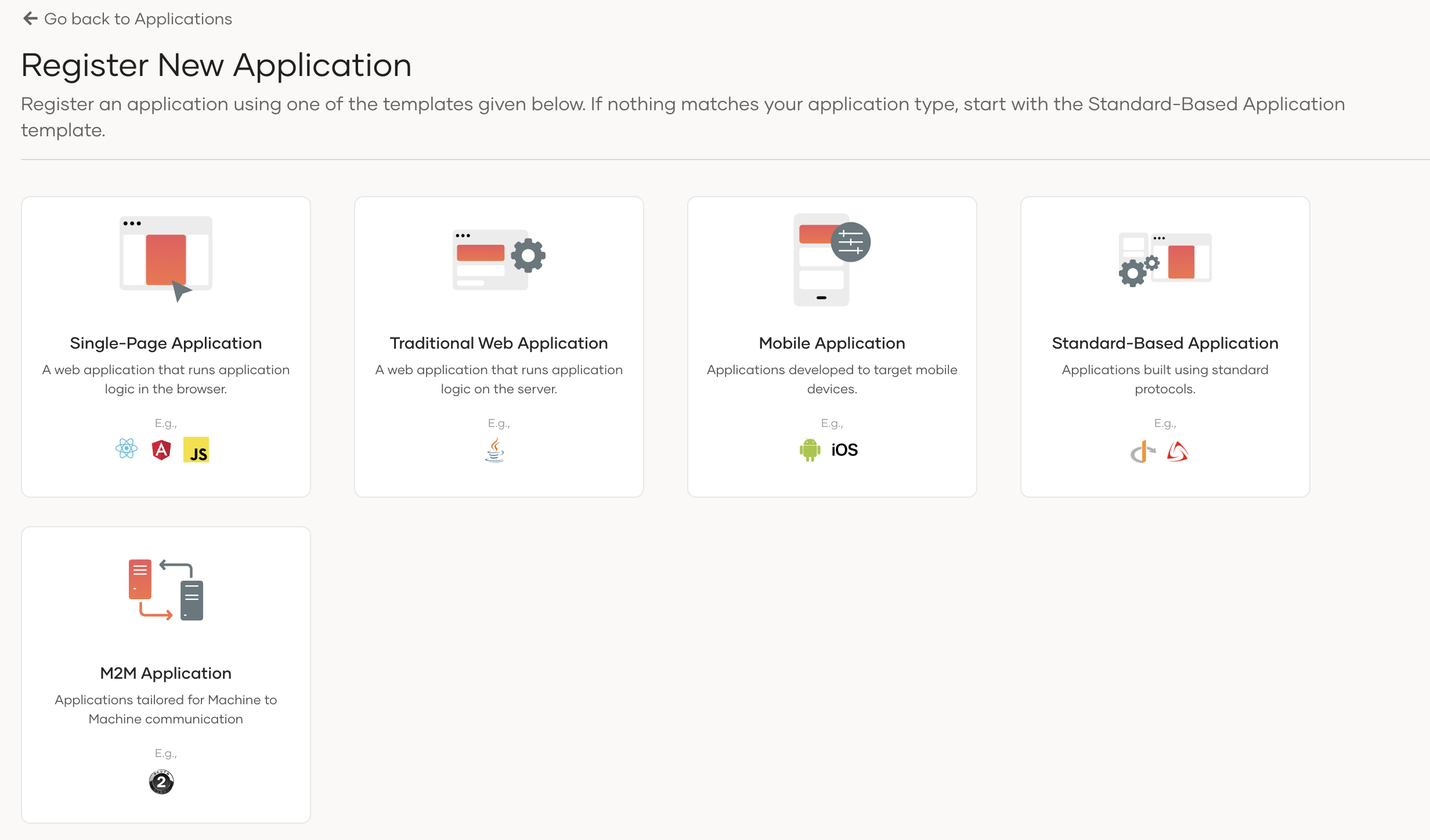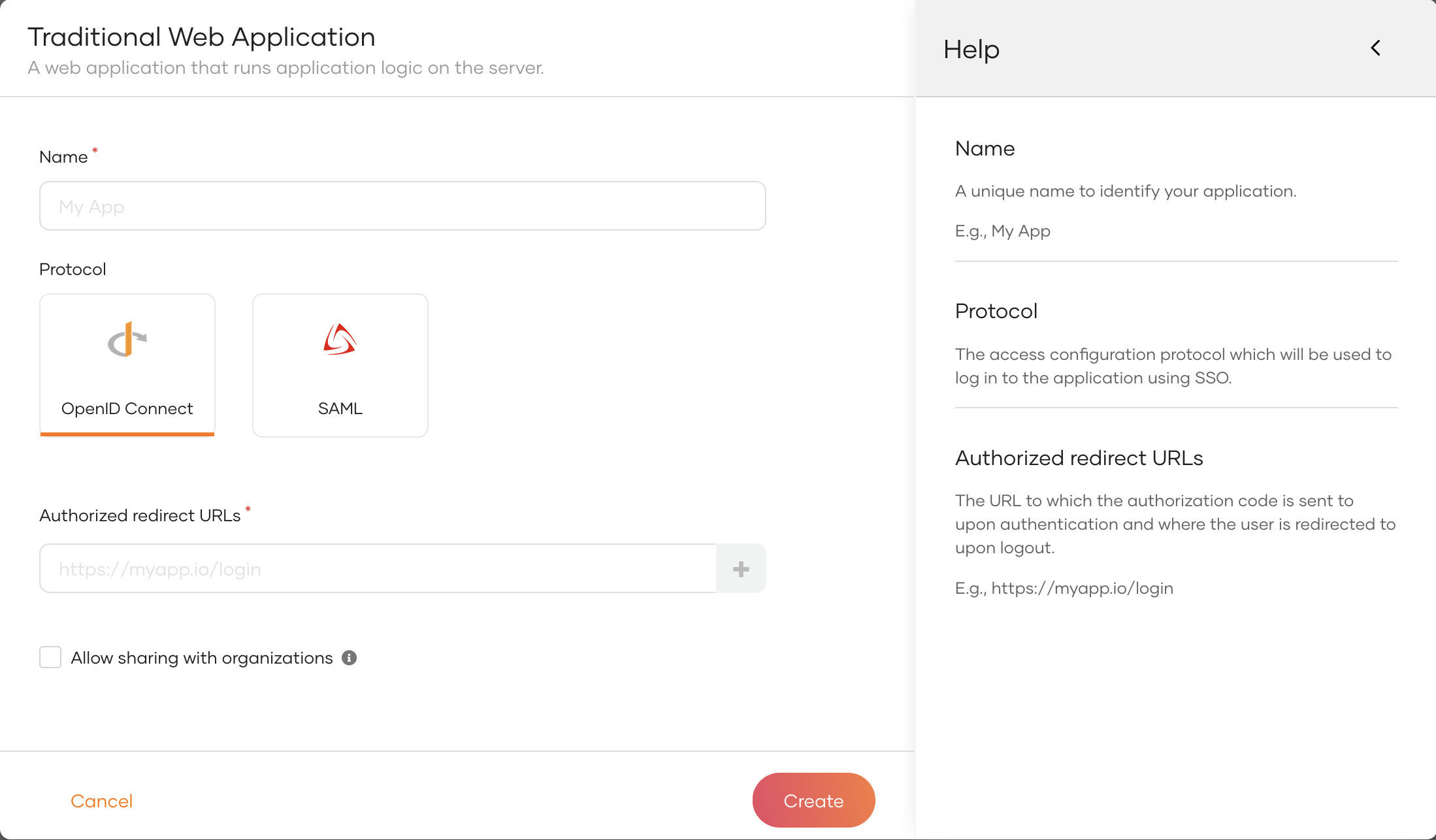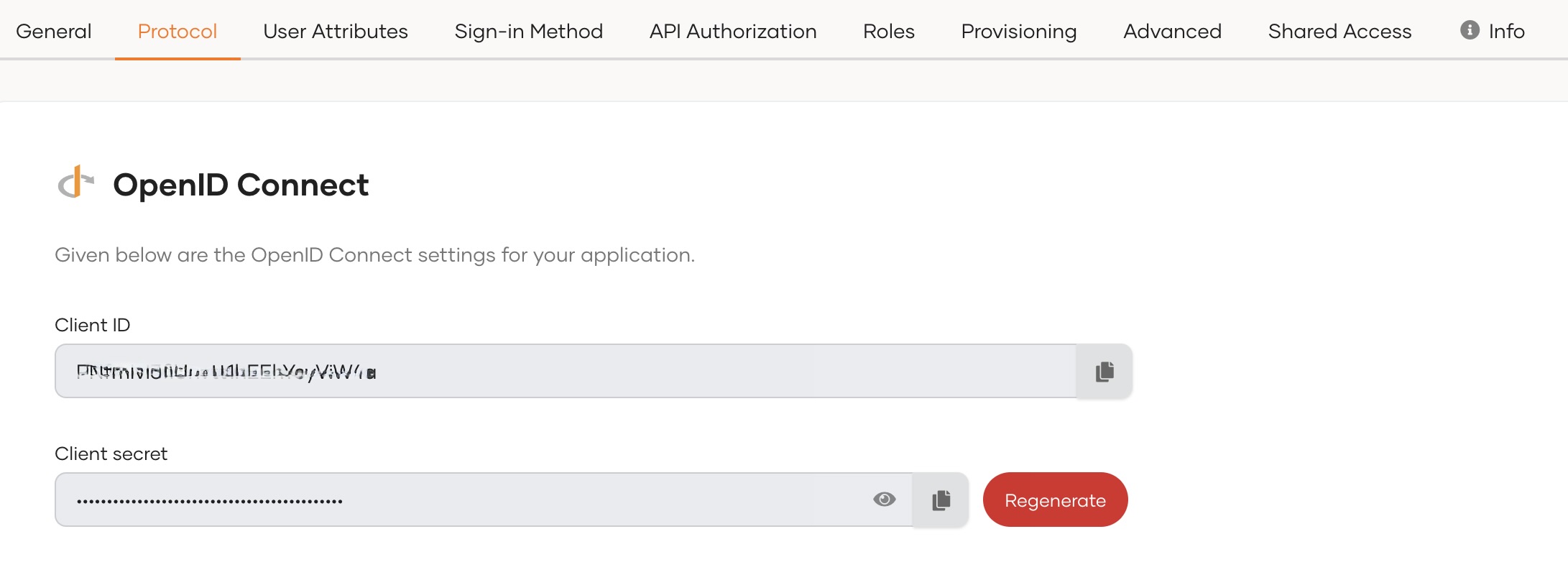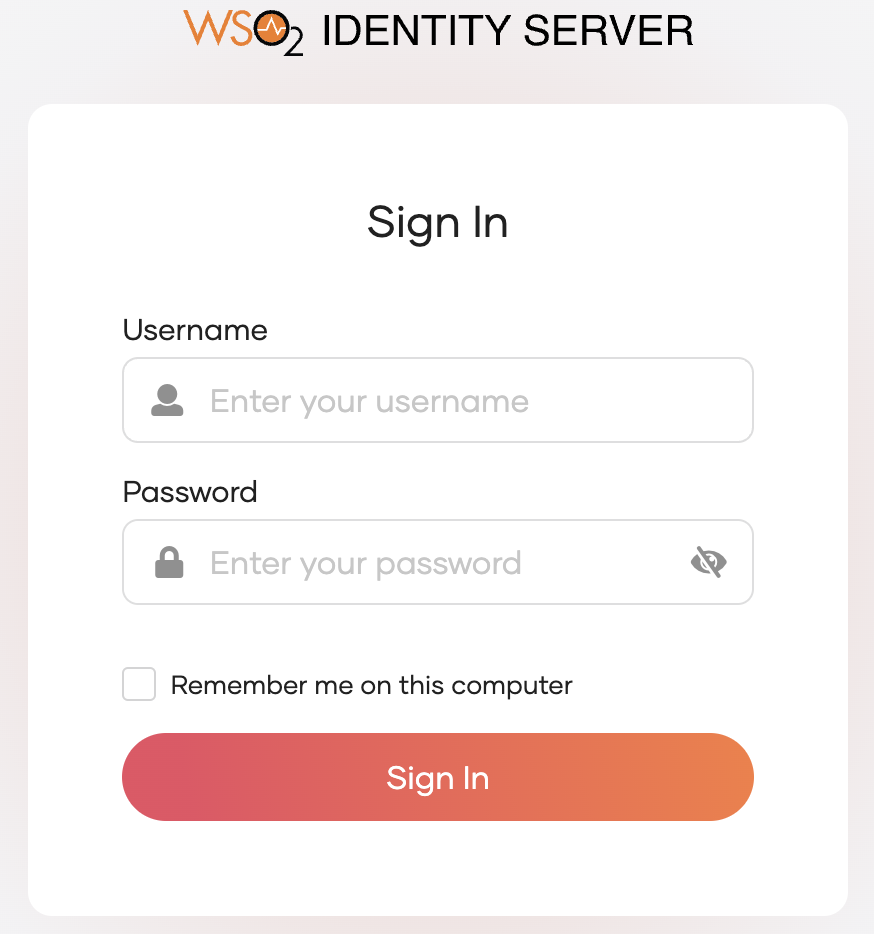Sample OIDC Java EE web app¶
By following this guide, you will be able to deploy a Java EE web application locally and secure it with OpenID Connect.
Prerequisites¶
-
Apache tomcat 9.x or 8.x
If you don't have it, install Apache tomcat.
-
A user account in the WSO2 Identity Server
If you don't already have one, create a user account in the WSO2 Identity Server.
Register the app¶
Follow the steps given below to register the sample Java EE web application in WSO2 Identity Server.
-
On the WSO2 Identity Server Console, go to Applications.
-
Click New Application and select Traditional Web Application:

-
Enter the following details:

Name Give a unique name to identify your application. Protocol Select OpenID Connect. Authorized redirect URLs The URL to which the user is redirected after a successful login. Use the following URL for this sample app: http://localhost:8080/oidc-sample-app/oauth2client -
Click Create to complete the registration.
-
Go to the Protocol tab and take note of the Client ID and the Client secret. You will need them to configure the application later.

Tip
To provide a better experience for the user, it is recommended to configure an access URL for the application. You can set an access URL from the General tab of the application. (For this sample application, the access URL is https://localhost:8080/oidc-sample-app).
The access URL is used,
- in the application catalog and discovery flows.
- to redirect the user back to the application in the following scenarios.
- if the login page times out
- after a password reset
- after the self sign-up verification
- to re-initiate the login flow if the login flow fails.
Download the sample¶
Click the button below to download the sample. You can also choose to view the source before doing so.
Configure the sample¶
Follow the steps given below to configure the sample app.
-
Move the war file that you downloaded to the
{TOMCAT_HOME}/webappsfolder where{TOMCAT_HOME}is the home directory of your Tomcat server. -
Open a terminal, navigate to the
{TOMCAT_HOME}/binfolder, and start the Tomcat server using the following command:sh catalina.sh startNote
This will extract the contents of the war file. If your Tomcat server is set to auto-deploy applications, you can skip this step.
-
Go to the
{TOMCAT_HOME}/webapps/oidc-sample-app/WEB-INF/classesfolder and open theoidc-sample-app.propertiesfile in a text editor. -
Update the following in the
oidc-sample-app.propertiesfile:consumerKey={client ID} consumerSecret={client secret} scope=openid,address,email,profile callBackURL=http://localhost:8080/oidc-sample-app/oauth2client trustedAudience=http://localhost:8080/oidc-sample-app issuer=https://localhost:9443/oauth2/token authorizeEndpoint=https://localhost:9443/oauth2/authorize logoutEndpoint=https://localhost:9443/oidc/logout tokenEndpoint=https://localhost:9443/oauth2/token jwksEndpoint=https://localhost:9443/oauth2/jwks #sessionIFrameEndpoint=https://localhost:9443/oidc/checksession skipURIs=/oidc-sample-app/index.html indexPage=index.html logoutURL=logout errorPage=error.jspConfiguration Description consumerKeyThe client id of the registered application. consumerSecretThe client secret of the registered application. scopeThe list of OIDC scopes that are used for requesting user information. You can add OIDC scopes such as
profileandemailin a comma-separated list as follows:scope=openid,address,email,profileissuerIssuer endpoint of the WSO2 Identity Server used for id token validation: https://localhost:9443/oauth2/tokenauthorizeEndpointThe authorization endpoint of the WSO2 Identity Server: https://localhost:9443/oauth2/authorizelogoutEndpointThe logout endpoint of the WSO2 Identity Server: https://localhost:9443/oidc/logouttokenEndpointThe token endpoint of the WSO2 Identity Server: https://localhost:9443/oauth2/tokenjwksEndpointThe jwks endpoint of the WSO2 Identity Server: https://localhost:9443/oauth2/jwks -
On your terminal, navigate to the
{TOMCAT_HOME}/binfolder and run the following commands to restart the Tomcat server for the configurations to take effect:sh catalina.sh stop sh catalina.sh start
Update the java keystore¶
By default, tomcat is using the default Java keystore (cacerts) to build the SSL connection. In WSO2 Identity Server, the default certificate is a self signed certificate. This certificate needs to be added to the Java keystore. Please follow the given steps below to extract the public key from WSO2 Identity Server keystore and import it to the Java keystore.
-
Export the public key from WSO2 Identity Server keystore.
-
Command
keytool -export -alias {{ CERT_ALIAS }} -file {{ CERT_NAME }} -keystore {{ PATH_TO_KEYSTORE }} -storepass {{ KEYSTORE_PASSWORD }} -
Sample
keytool -export -alias wso2carbon -file carbon_public2.crt -keystore wso2carbon.jks -storepass wso2carbonTip
The default keystore of WSO2 Identity Server can be found in {{ IS_HOME }}/repository/resources/security directory.
-
-
Convert the certificate to X509 format.
-
Command
openssl x509 -in {{ CERT_NAME }} -inform der -outform pem -out {{ PEM_CERT_NAME }} -
Sample
openssl x509 -in carbon_public2.crt -inform der -outform pem -out certificate.pem
-
-
Import the created
.pemcertificate to Java keystore.-
Command
sudo keytool -import -trustcacerts -keystore {{ PATH_TO_CACERTS_KEYSTORE }} -storepass {{ CACERTS_PASSWORD }} -noprompt -alias {{ CERT_ALIAS }} -file {{ PEM_CERT_PATH }} -
Sample
sudo keytool -import -trustcacerts -keystore $JAVA_HOME/lib/security/cacerts -storepass changeit -noprompt -alias wso2carbon -file certificate.pem
-
-
After importing the certificate, restart the Tomcat server in order to fetch the latest certificates.
sh catalina.sh stop sh catalina.sh start
Run the sample¶
Follow the steps given below to run the sample.
-
Access the application using the following URL:
http://localhost:8080/oidc-sample-app/index.html. -
Click Login. You will be redirected to the WSO2 Identity Server login page.

-
Enter the credentials of your user account and click Sign In.
Extend your login session
By default, the user login session is active for only
15 minutes. You can extend the session to14 daysby selecting the Remember me on this computer option provided at the login screen of your application.

